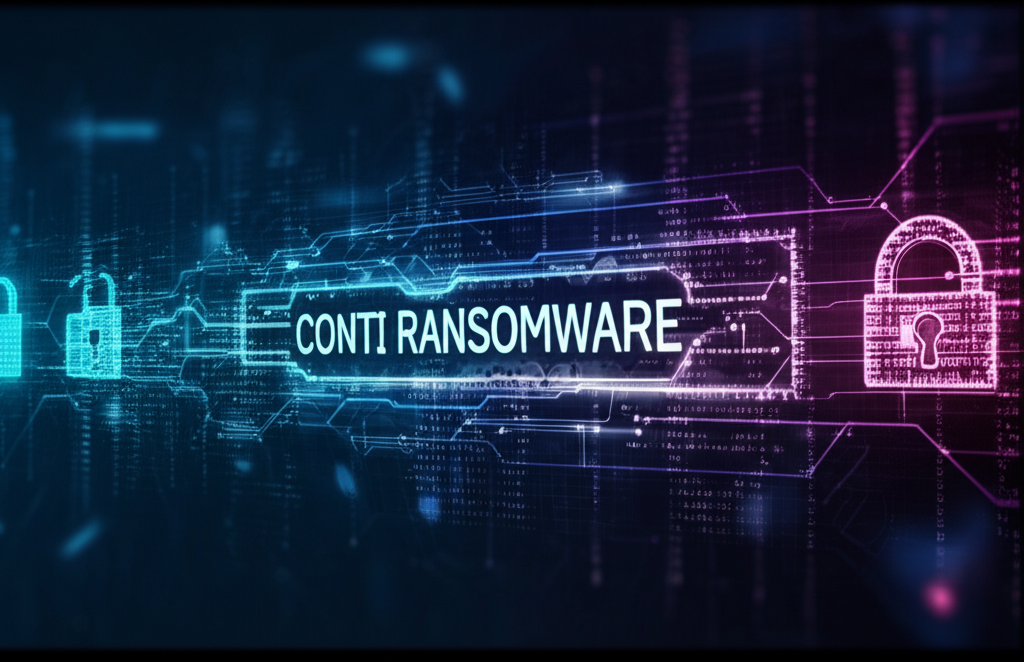Conti Ransomware Group: Unveiling Its Tactics, Impact, and Legacy
The Shadow of Conti: Deconstructing a Notorious Ransomware Empire
The name Conti Ransomware Group once struck fear into organizations worldwide. A prolific and highly aggressive cybercrime syndicate, Conti emerged as one of the most dominant threats in the ransomware landscape, responsible for crippling attacks on critical infrastructure, healthcare providers, and businesses of all sizes. Operating a sophisticated Ransomware-as-a-Service (RaaS) model, Conti exemplified the evolving sophistication of financially motivated cyber threats, leaving a trail of disruption and financial devastation in its wake.
Who Was the Conti Ransomware Group?
Believed to be a Russian-linked threat actor, the Conti group rose to prominence in 2020, quickly establishing itself as a successor to the notorious Ryuk ransomware. They were characterized by their highly organized structure, aggressive tactics, and a significant network of affiliates. Their operations were not merely about encrypting data; they pioneered and perfected the ‘double extortion’ technique, first exfiltrating sensitive data and then threatening to publish it if the ransom was not paid, adding immense pressure on victims.
Modus Operandi: A Blueprint of Digital Extortion
Conti’s attacks were meticulously planned and executed, often involving a multi-stage approach:
- Initial Access: Gaining entry typically through sophisticated phishing campaigns, exploiting vulnerabilities in internet-facing services (e.g., VPNs, RDP), or leveraging stolen credentials.
- Lateral Movement: Once inside, attackers would move stealthily across the network, escalating privileges, and mapping the infrastructure. They frequently utilized legitimate tools like PowerShell, Mimikatz, and various remote access software.
- Data Exfiltration: Before encryption, Conti actors would identify and exfiltrate large volumes of sensitive data, including financial records, personal information, and intellectual property.
- Encryption: Deploying their highly effective ransomware payload, which encrypted critical files and systems across the victim’s network, often using a mix of AES-256 and RSA-4096 algorithms.
- Ransom Negotiation: Demanding substantial ransoms, often in cryptocurrency, with strict deadlines and threats of data publication.
High-Profile Victims and Global Impact
Conti’s reach was global, impacting hundreds of organizations. Some of their most significant attacks included:
- The Costa Rican Government: In early 2022, Conti launched a devastating attack on multiple government agencies in Costa Rica, disrupting customs systems and public services, leading the country to declare a state of national emergency.
- Irish Health Service Executive (HSE): A major attack in May 2021 severely impacted Ireland’s healthcare system, leading to widespread cancellation of appointments and diagnostic services.
- Multiple Critical Infrastructure Organizations: Numerous reports linked Conti to attacks on sectors deemed critical, highlighting the potential for national security implications.
“The Conti Ransomware Group demonstrated a level of organizational sophistication and aggression that set a new benchmark for cybercriminal enterprises. Their ability to adapt and pivot made them a formidable adversary for even the most resilient cybersecurity defenses.” – Cybersecurity Analyst
The Alleged Demise and Persistent Legacy
The alleged shutdown of the Conti Ransomware Group in May 2022 was a complex event. Following internal chat logs leaked due to their support for Russia in the Ukraine war, and subsequent increased international pressure, the group publicly announced its disbandment. However, cybersecurity experts widely believe that the Conti operators and their affiliates merely splintered and rebranded, re-emerging under new names like BlackBasta, Karakurt, and Quantum. This strategic move allowed them to evade scrutiny, continue operations, and diversify their attack vectors.
Fortifying Defenses Against Evolving Ransomware Threats
While the Conti brand may be gone, the threat actors and their tactics persist. Organizations must remain vigilant and implement robust cybersecurity measures to protect against current and future ransomware variants:
- Robust Endpoint Security: Deploy advanced endpoint detection and response (EDR) solutions.
- Multi-Factor Authentication (MFA): Implement MFA across all services, especially for remote access and privileged accounts.
- Regular Backups: Maintain immutable, offline backups of all critical data, and regularly test recovery procedures.
- Network Segmentation: Isolate critical systems and sensitive data to limit lateral movement in the event of a breach.
- Employee Training: Conduct regular cybersecurity awareness training to educate employees on phishing, social engineering, and safe internet practices.
- Incident Response Plan: Develop and regularly test a comprehensive incident response plan to quickly detect, contain, and recover from attacks.
- Vulnerability Management: Regularly patch and update all software and systems to mitigate known vulnerabilities.
Conclusion: Learning from the Conti Chapter
The Conti Ransomware Group’s reign serves as a stark reminder of the persistent and evolving threat of cybercrime. Its story highlights the need for continuous vigilance, proactive defense strategies, and international cooperation to combat these sophisticated adversaries. Organizations must learn from Conti’s blueprint of extortion and invest in resilient cybersecurity frameworks to safeguard their digital assets against the next wave of ransomware attacks, regardless of the name they operate under.







